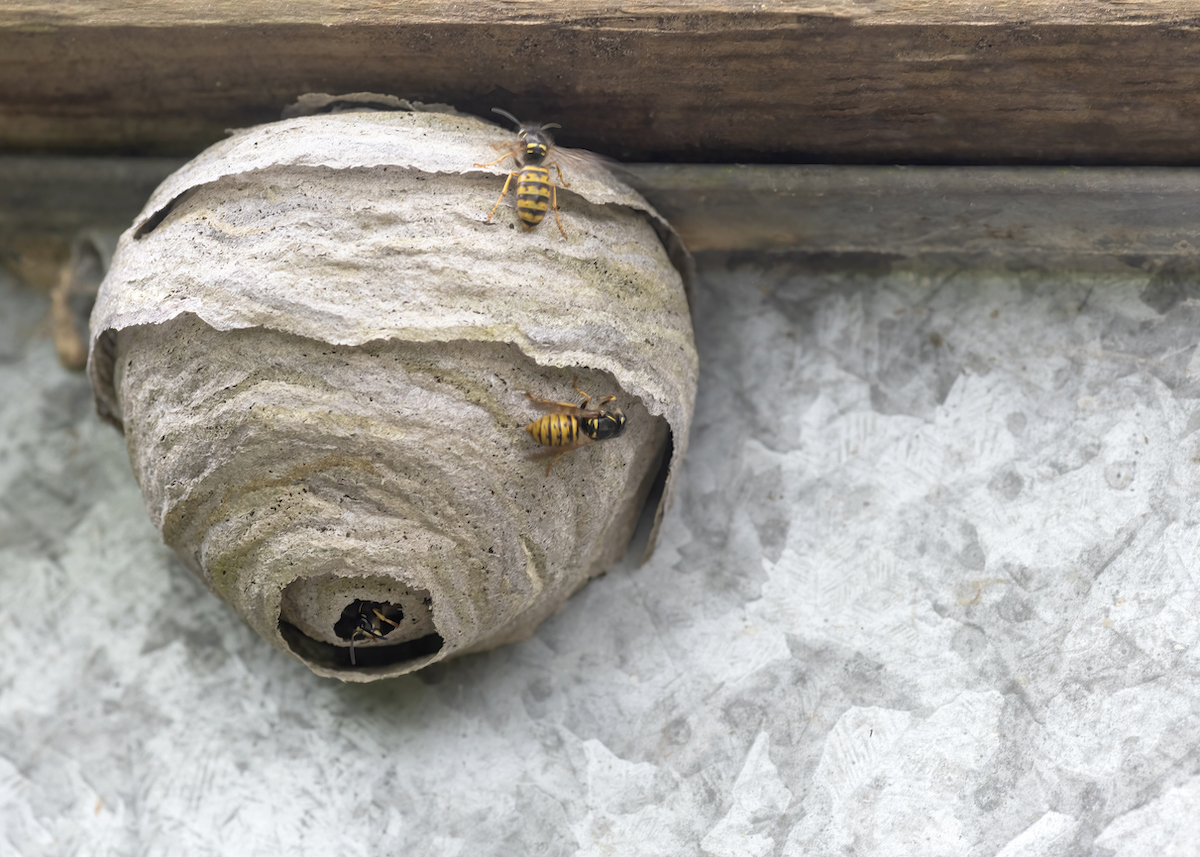We may earn revenue from the products available on this page and participate in affiliate programs. Learn More ›
Summer is here, and with it comes outdoor fun, lawn games, and…wasps. These pesky insects can make their nests in various places around your home or apartment. To ensure your summer activities are safe and sting-free, it’s crucial to check for wasp nests in common — and some surprising — places.
Here’s a guide to help you spot these hidden dangers before they become a bigger problem.
Eaves
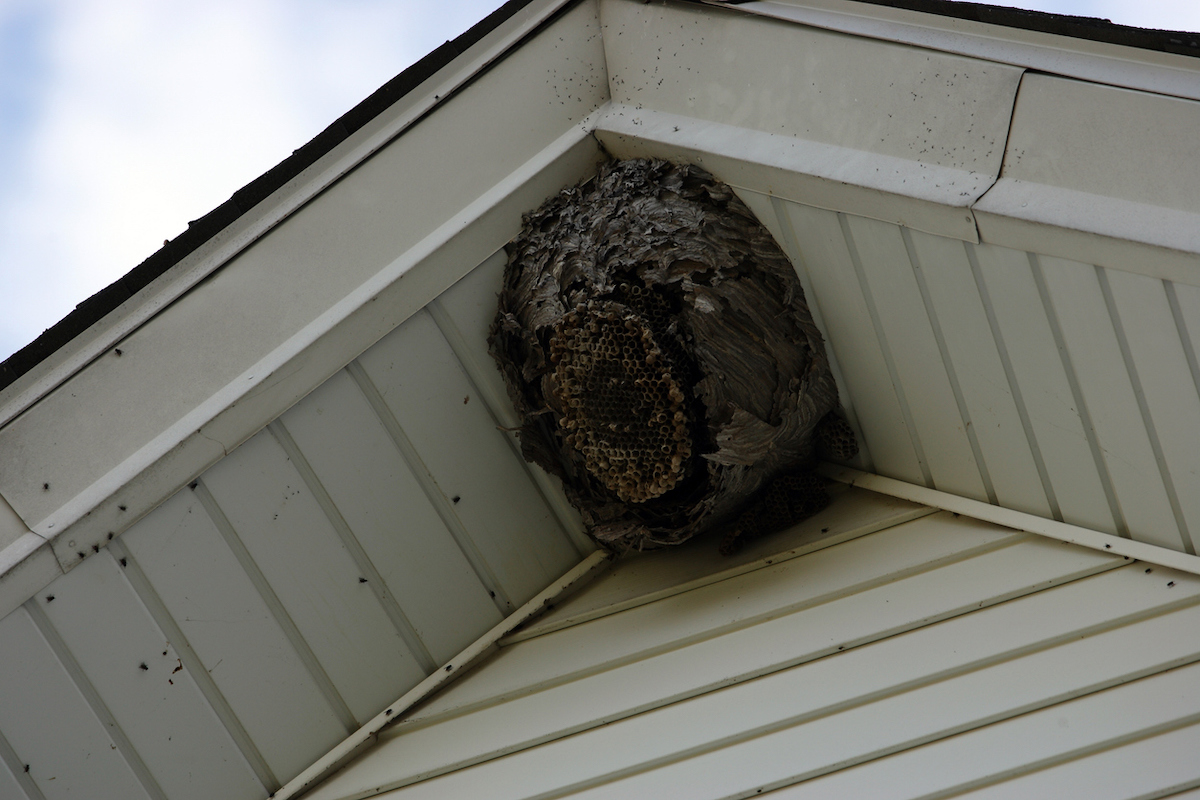
Photo: iStock
Your house’s eaves are a prime spot for wasp nests because they’re sheltered and provide protection from the elements. Inspecting your eaves can help you catch signs of nesting early before it becomes an infestation. When you clean your eaves, be vigilant about looking for nests to avoid injuries.
Under the Deck
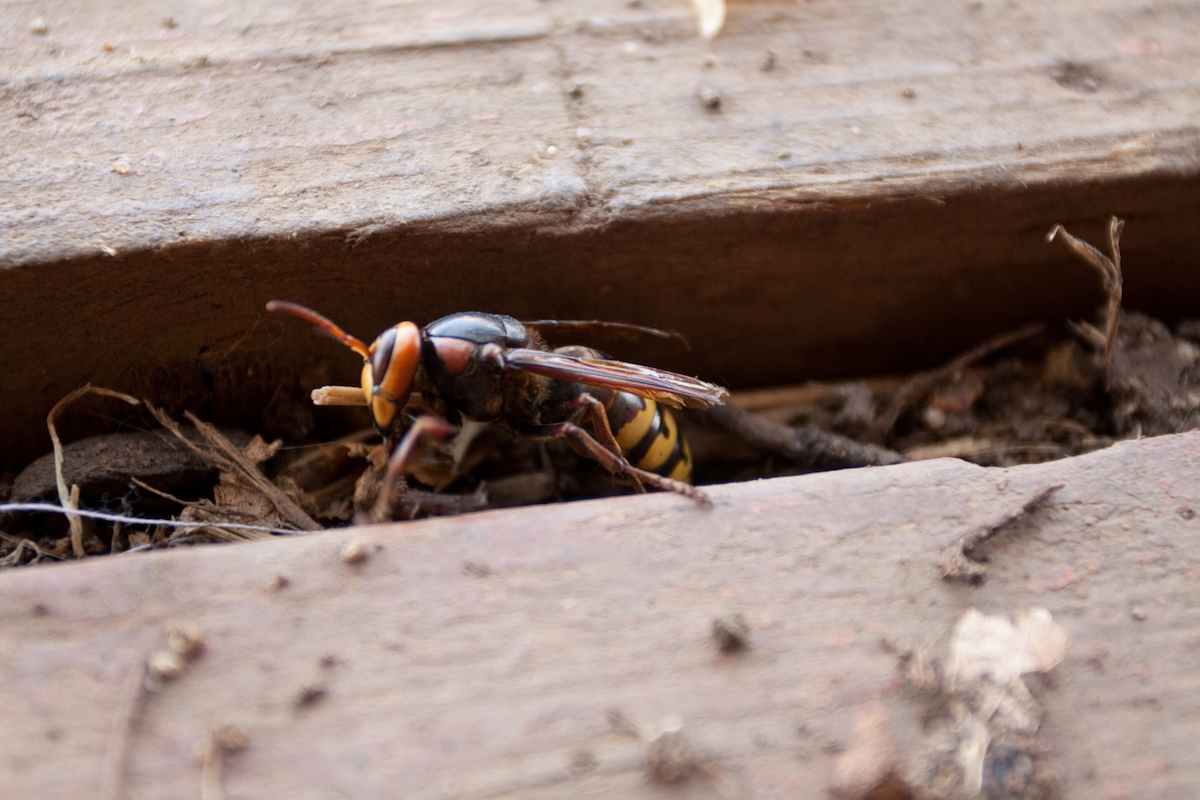
Photo: iStock
Shannon Harlow-Ellis, Associate Certified Entomologist at Mosquito Joe, says that the underside of porches and decks is another favorite spot for wasps. The dark, quiet space is perfect for them to build their nests unnoticed. It’s a good idea to do a thorough check in these areas before spending time outdoors at the beginning of the season.
Sheds and Garages
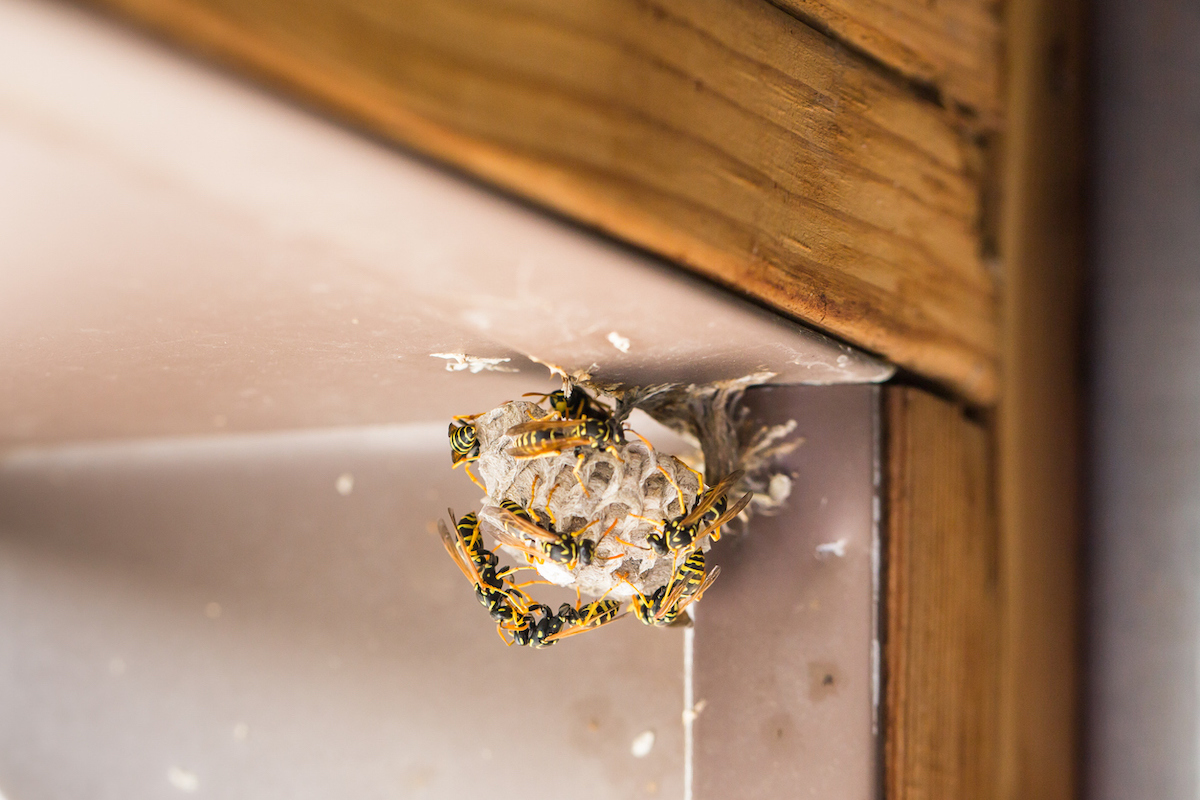
Photo: iStock
Sheds and garages are often poorly sealed and insulated, allowing wasps to easily find entry points. Because these areas are less frequented, wasps can nest there undisturbed. Look in the corners, rafters, and other secluded areas for signs of wasps nesting. To prevent your storage spaces from becoming wasp havens, keep them clean and tidy so that you can easily identify nests.
Grills
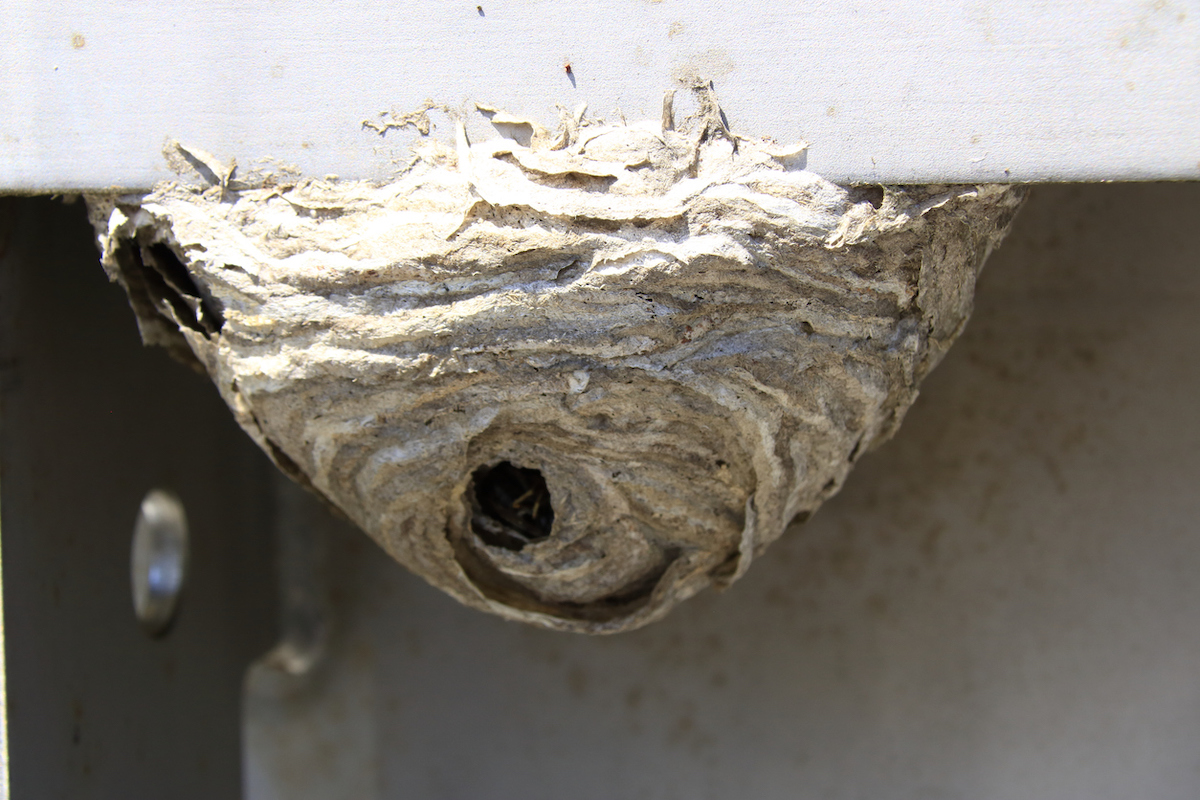
Photo: iStock
If you don’t use your grill in the off-season, wasps can make it their new home by entering through small openings to build nests. Before firing up the barbecue, give it a thorough inspection by checking the interior and exterior of the grill to make sure it isn’t housing a nest. This way, you’ll avoid any nasty surprises when you start grilling in the spring.
Tree Trunks
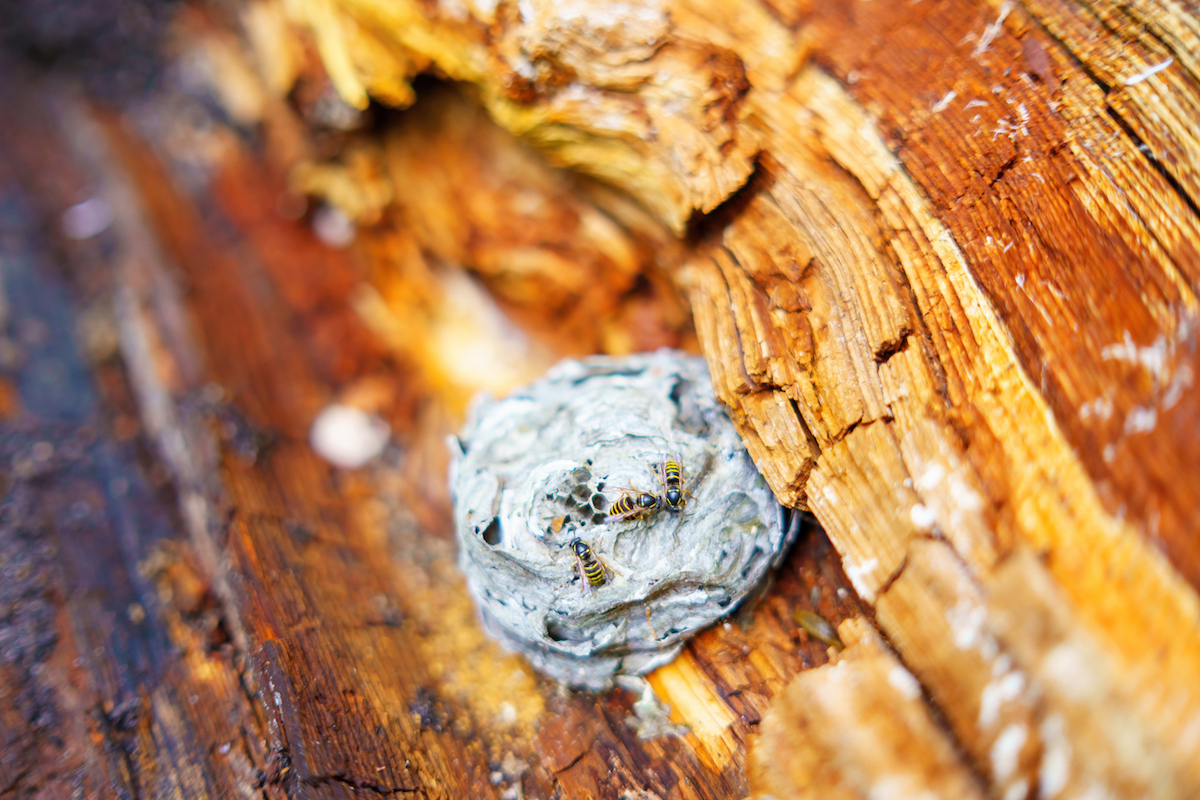
Photo: iStock
“A few common places that homeowners should check for wasp nests are hollow trees, tree branches, bushes with a lot of foliage,” says Harlow-Ellis. Wasps love hollow trees and the trunks of cut-down trees because natural cavities provide the perfect shelter for their nests. Regularly inspecting your trees can help you identify and remove nests before they become a problem. Look for any holes or cavities in the trunks, and check the branches and foliage.
Underground
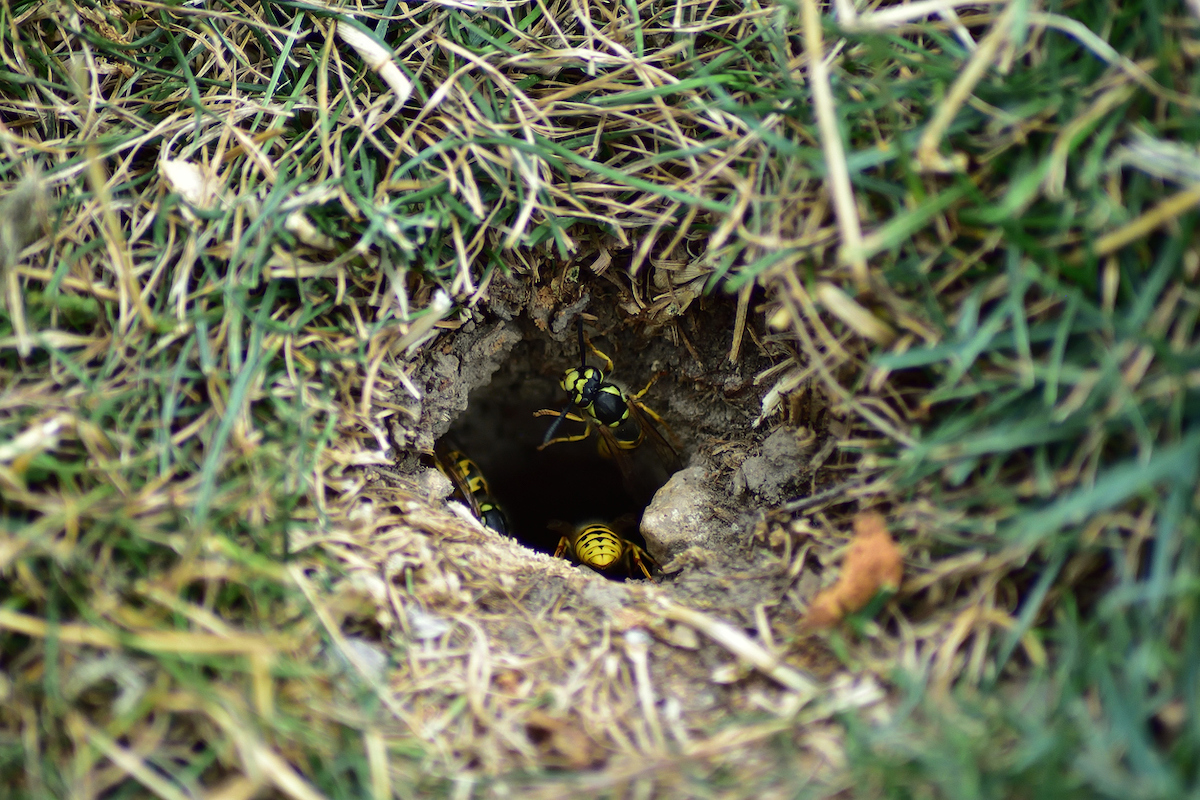
Photo: iStock
Some wasps build their nests in the ground. Harlow-Ellis explains, “A few surprising places homeowners should look are underground — depending on the type of wasp, homeowners can find nests in the ground by roots or where the ground is soft.” Pay attention to any holes in your yard because they could indicate an underground nest. Ground-dwelling wasps can be particularly aggressive when they’re disturbed, so be extra careful and consider professional help if you suspect there’s an underground nest on your property.
Children’s Play Equipment
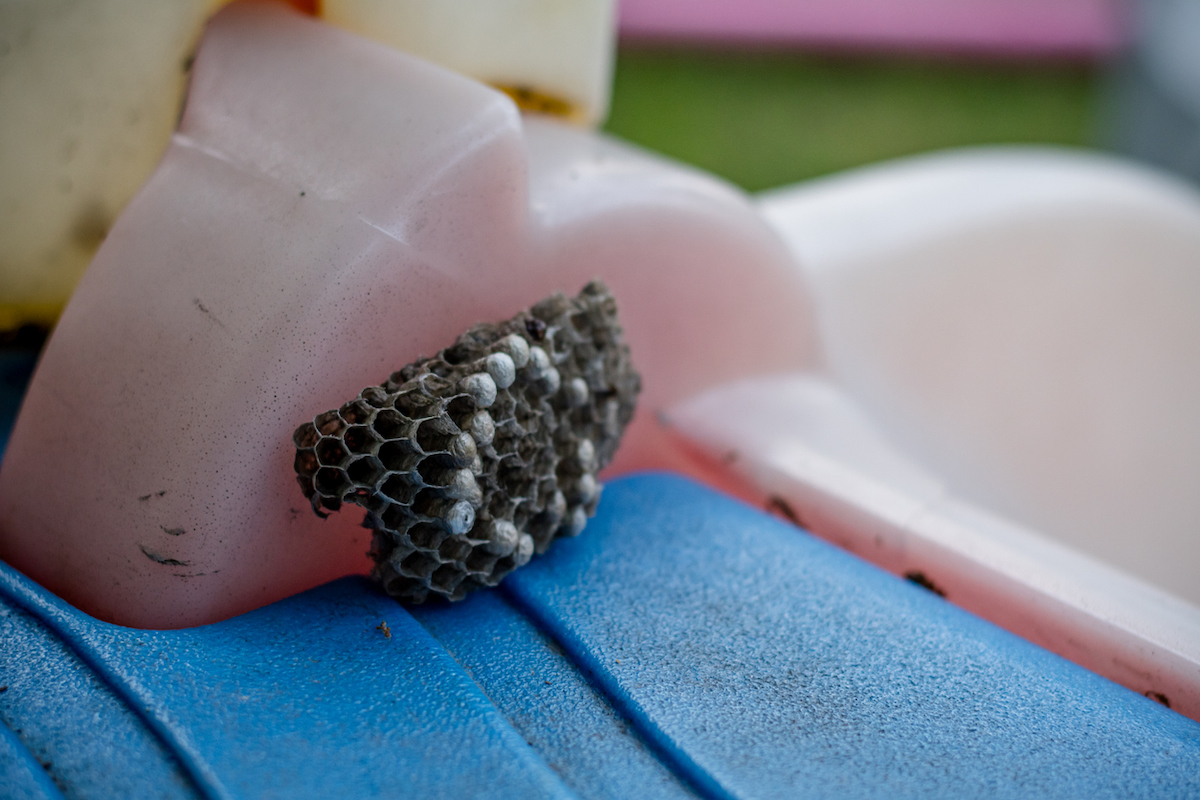
Photo: iStock
In order to protect your little ones from stings, be sure to regularly check their outdoor play equipment for wasp nests. Wasps may be drawn to the areas under slides, jungle gyms, and trampolines because they’re sheltered.
Vehicles
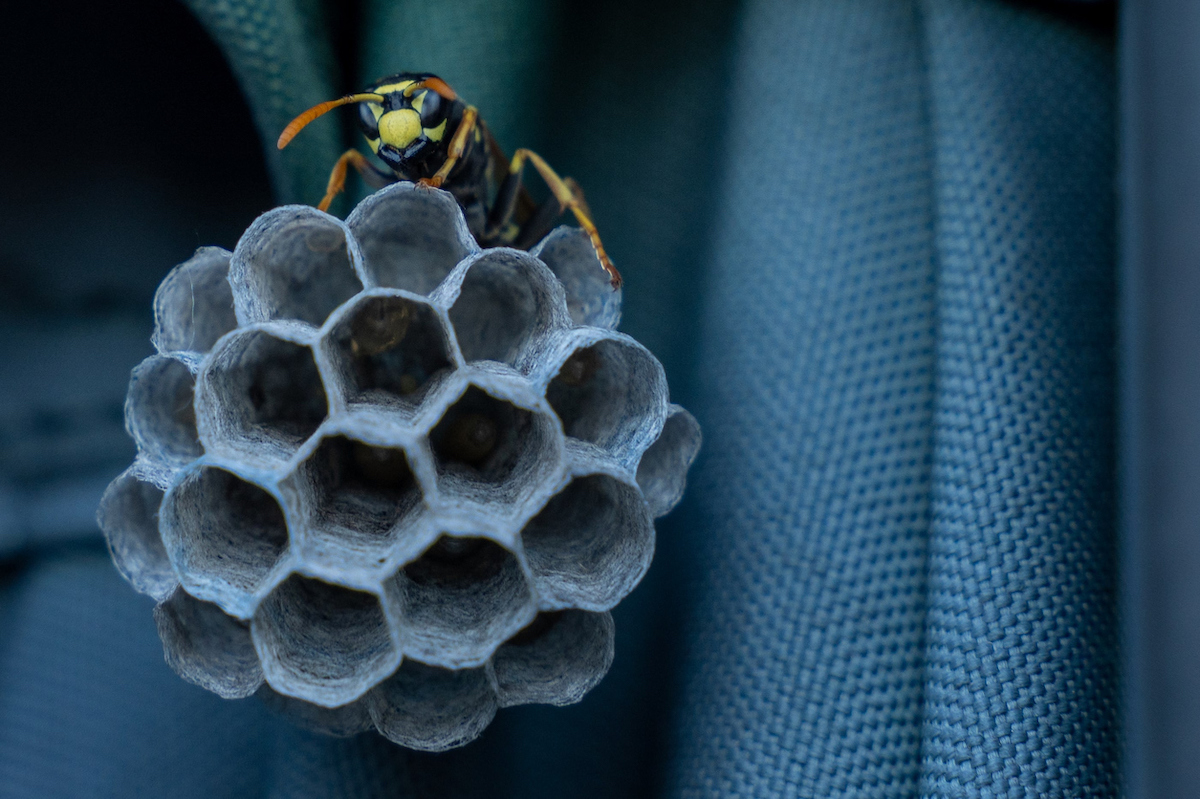
Photo: iStock
If you have an unused or rarely used vehicle on your property, check it for wasp nests. These pests can enter through small openings and build nests in the engine compartments, wheel wells, and hidden compartments of cars, boats, and RVs. If a vehicle has been stationary for a long time, inspect it before using it again.
Firewood Stacks
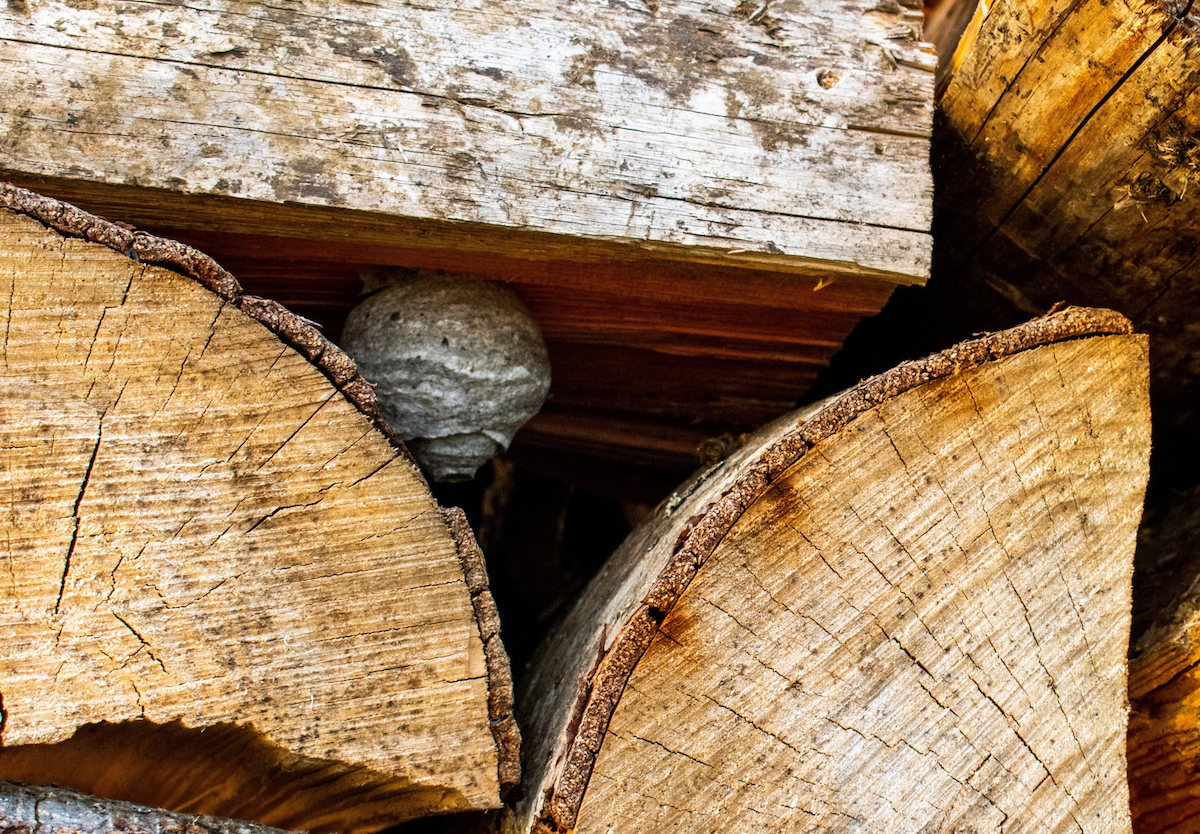
Photo: iStock
If you have firewood stacked near your home, it could be a prime place for wasps to hide and nest. The sheltered and shaded environment of the woodpile can be particularly appealing. Make sure to carefully check between logs before moving the wood to avoid inadvertently disturbing a nest.
Patio Furniture

Photo: iStock
Patio furniture can have lots of nooks and crannies that are appealing to wasps, especially in umbrellas and between seat cushions. At the beginning of the season be sure to inspect your outdoor furniture to make sure no wasps have nested there during the colder months. Look under each piece of furniture as well as in the frames of chairs and tables before you settle in to relax.

Our Best Advice for Beginner Gardeners
We’ll help you set up your first garden—whether that’s a few pots on your patio, a raised bed, or an in-ground plot out back—and select the right plants for your soil and region.

